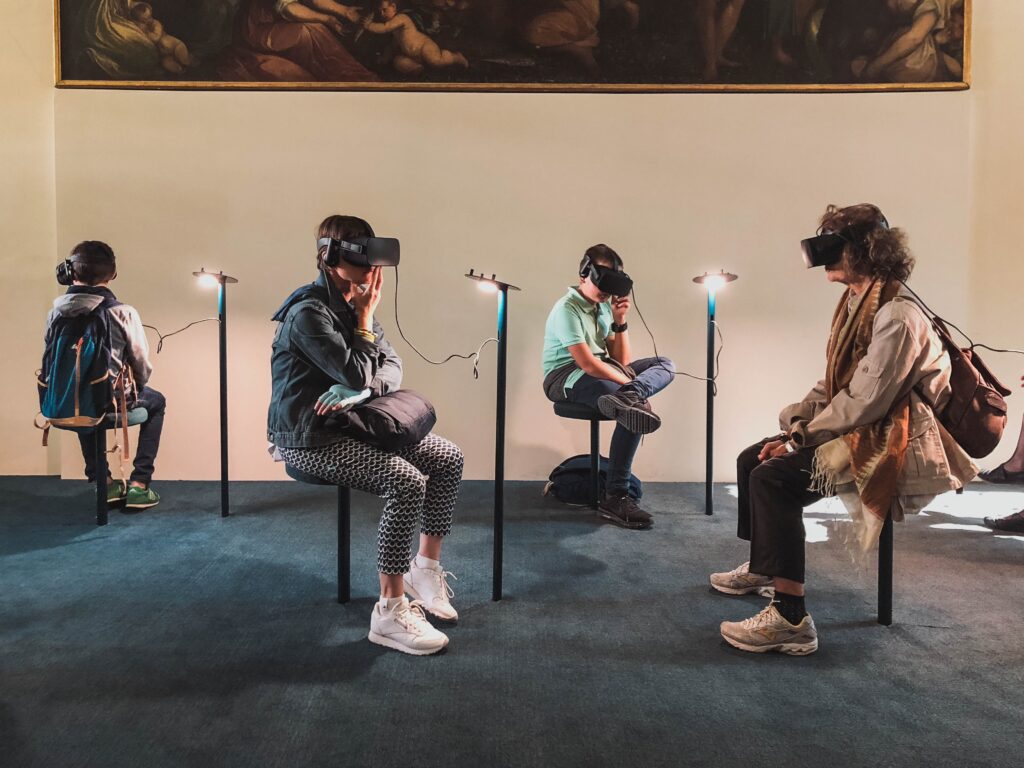If Freddy Mercury were writing that song today, he might have to revise his lyrics, as the ingenuity of new technology has created alternative versions of reality in which we can immerse ourselves. Anyone who has grown up in the digital age will be familiar with the long-held fantasy that we will simply be able to don a headset or pair of glasses and step out of the real world into a fully envisaged, realistic simulated one. Although work on such devices has been going on almost since the invention of digital computing, it is only now really coming to fruition and becoming a realistic, practical prospect. There are essentially two forms of “new reality” on offer: virtual reality and augmented reality.
Virtual Reality (VR) is a concept most of us think of when we think of alternative realities provided by technology: this involves wearing a headset that provides a completely submersive environment, i.e. one that completely shuts out the real world and fills 100% of your field of vision. Wherever you turn your head, and to a limited extent wherever you move your hands/body (one of the drawbacks of VR is that for standard home use there are limitations imposed by the amount of space you practically have available in which you can move around), the headset creates images using feedback from motion controllers that read your movements. Such systems are already available to gamers, e.g. PlayStation VR, Oculus Rift, Windows Mixed Reality, etc. These are brilliant for gaming, and as they develop further sophistication could become highly valuable for personnel training, e.g., teaching firefighters how to move around a burning building, etc. However, as noted, they have limitations in that the user effectively has to remain within a small space, and is obviously blind to anything in the real world environment, such as cable trip hazards, etc.
Augmented Reality (AR) is in its way less spectacular than VR, but it may well have more practical uses. With augmented reality, technology imposes additional features upon your view of the real world. This is already commonplace in mobile phone applications, with Pokémon Go perhaps being the most famous, where the user looks through their smartphone at the real world and cartoon characters are imposed on top of it. This is now being further developed so that users wear a pair of glasses/headset with information or images being projected directly onto their field of vision. The practical uses of this sort of technology are almost infinite. Imagine strolling around an unfamiliar town looking at restaurants; you could program your AR device to flash up a review or ratings for each restaurant simply as you glance at them. When navigating an unfamiliar environment, you would no longer still have to look down at your phone, pause, look up and repeat ad infinitum; the directions will be right there before your eyes. AR glasses have already been trialled successfully with trainee surgeons, where the teacher could be in another country but seeing exactly what the trainee sees through their glasses and being able to impose instructions or indications on their real-world view.
As with all new technologies, there are some drawbacks to both VR and AR. With VR, concerns have been raised about the effect on users’ vision of prolonged exposure to 100% wraparound CGI; some psychologists have questioned the effect prolonged periods of virtual reality will have on the way users perceive actual reality. With AR, as was seen with the ill-fated introduction of Google Glass, there are practical concerns (heaviness of device, battery life etc.) and privacy concerns, particularly in relation to users being able to take videos of people that they are looking at, without their prior knowledge or consent. However, given the thrilling immersive experience that VR can provide, and the unrivalled practical utility of AR, there seems little doubt that these technologies will continue to be developed and ultimately become as commonplace in our technological landscape as the smart phone or the satnav.

Margie Rodriguez says:
Woah! I’m really enjoying the template/theme of this blog.
It’s simple, yet effective. A lot of times it’s hard to get that “perfect balance”
between usability and visual appearance. I must say that you’ve
done a excellent job with this. Additionally, the blog loads very fast for me on Internet explorer.
Exceptional Blog!
William Calderon says:
Its not my first time to visit this web site, i am visiting this web
page dailly and get nice facts from here every day.
Jesse Hernandez says:
Hey there! I’ve been reading your web site for a long time now and
finally got the courage to go ahead and give you a shout
out from Dallas Tx! Just wanted to say keep up the
fantastic work!
Sharon Witkowski says:
It’s hard to come by educated people about this subject, but you seem like you know
what you’re talking about! Thanks